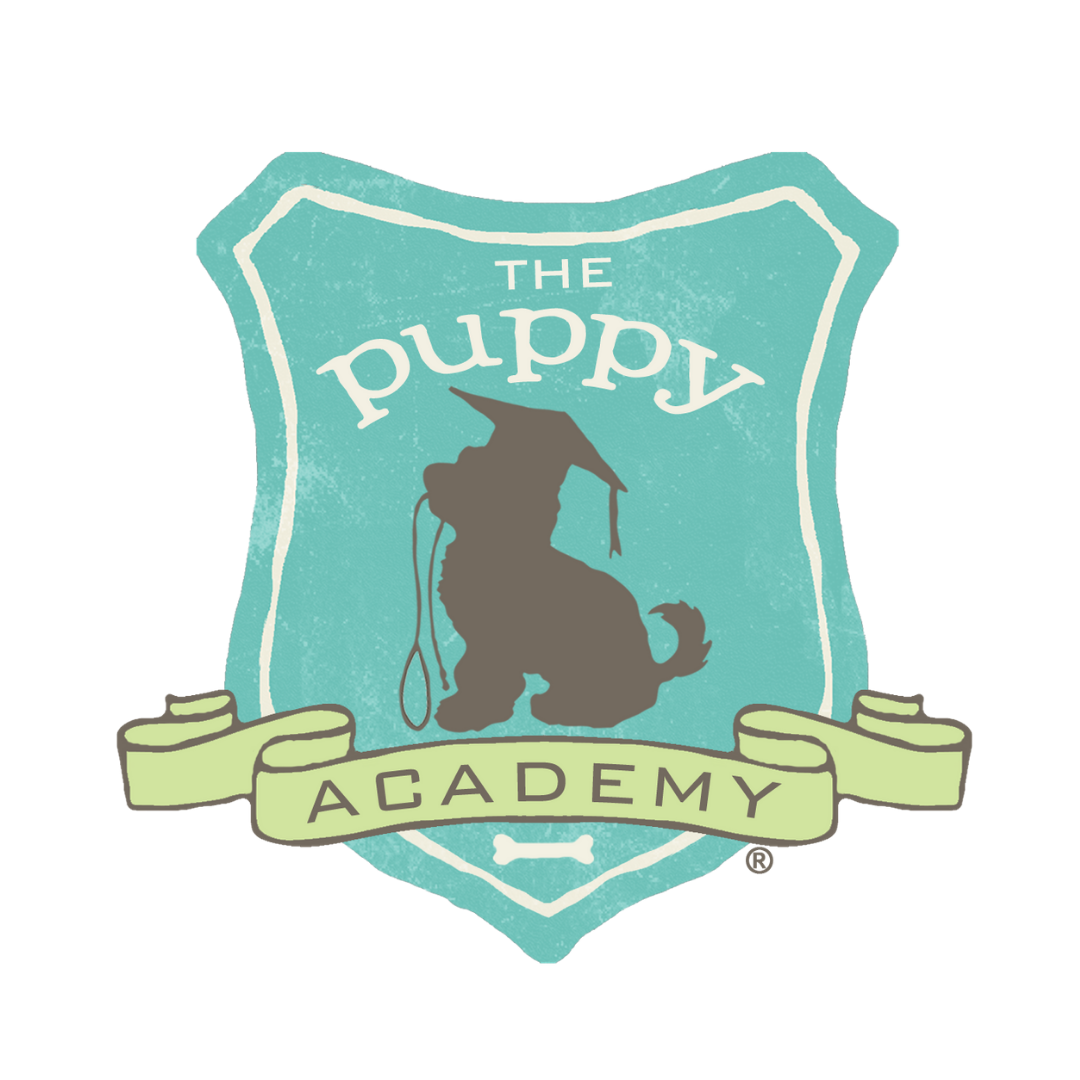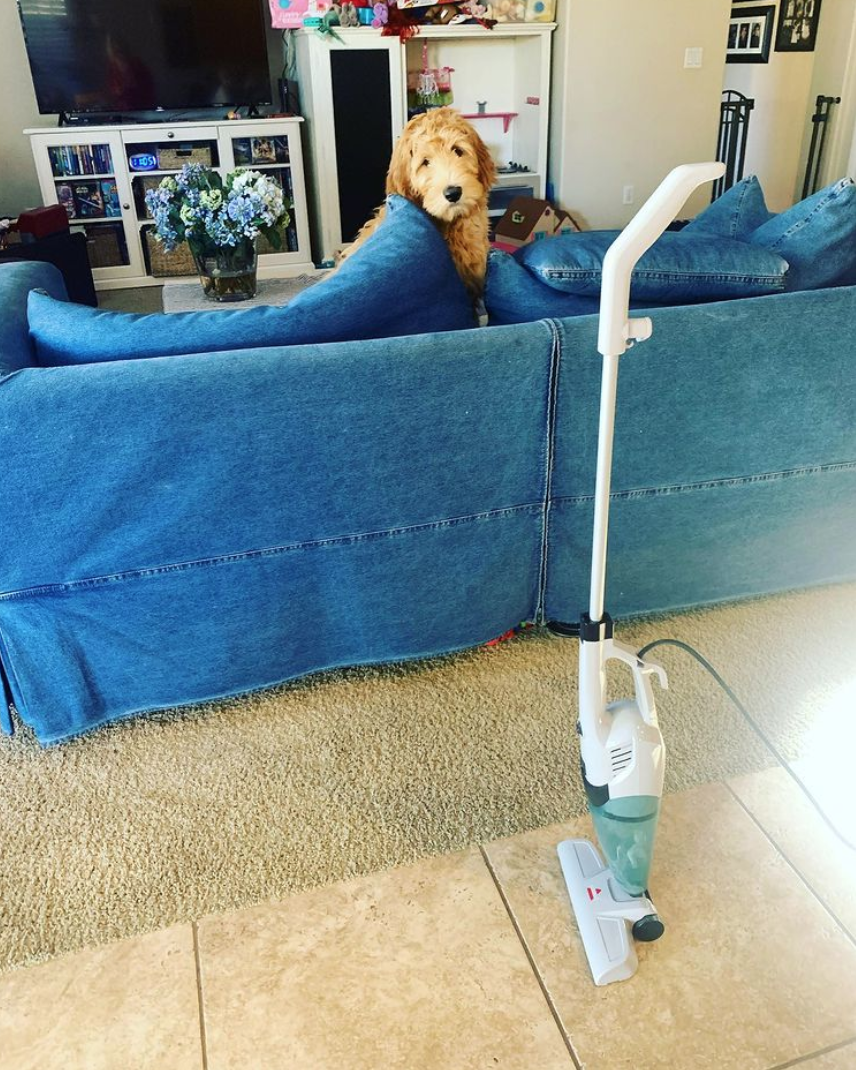Creating resilient puppies that can handle the world and all its sounds! Learn how to teach your pup to be comfortable with common household appliances and noises!
The Puppy Academy student, Levi!
What is Desensitization?
It might sound like a very complex term, but basically, desensitization is the practice of getting your puppy used to different noises - household appliances, kids playing, traffic noises, dogs barking, construction, fireworks, thunderstorms, etc.
When you start desensitization training your puppy, you can use basic obedience routines and food rewards to help your puppy work through these challenging and often scary sounds, while building up their level of comfort and confidence.
Life is unpredictable and sometimes, things can occur that could frighten your puppy. The benefit of desensitization training for puppies is the lower risk of your puppy experiencing an uncertain situation later in life and reacting! Imagine going out with your puppy and something startling happens, thanks to desensitization training, you can regain your puppy’s attention much faster and easier. It will condition your puppy to look to you for guidance and also help them remain calm during those types of incidents.
JOIN US LIVE, WEDNESDAYS AT 1 PM PT @THEPUPPYACADEMY INSTAGRAM FOR Q&AS WITH OUR PUPPY TRAINERS!
How do you begin to work through these sounds?
The Puppy Academy students practicing outdoor desensitization during their pack walk in Hermosa Beach, CA!
Luckily, there are plentiful resources on the internet! YouTube search any of the noises that we listed before and you can find plentiful video loops. Also, there are apps available to download on your phone with similar sound loops. Play these sound loops during your puppy’s playtime, or when they are in their crate, or just hanging out with you. The key is that your puppy is listening to these sounds in a calm and controlled environment. You can control the volume of the noises, starting at the lowest setting and gradually increasing to higher levels up to where your puppy tolerates and as your puppy grows more comfortable.
There are two instances we recommend you focus on when it comes to sound desensitization training your puppy. The first, being during downtime. So think of your puppy’s crate or playpen when they are settling in during the day for a rest. Play the loop in the background on low to help them get used to it as part of their normal every day. Then, the second, when your puppy is actively working on an easy and enjoyable training routine, like “Come” for their food bowls. The reason why is because you can’t magically make your puppy not be afraid of something but you can use food to condition to look at you when uncertain situations happen. This builds a positive habit of your puppy relying on you.
Desensitization to household appliances!
@finleythelabra_doodle
Get ready with plenty of treats!
The infamous vacuum, hairdryer, blender, or even plastic garbage bags. These regular household appliances and items can stimulate your puppy’s fear drive and send them running under the nearest bed.
The best method to start to desensitize your puppy to these things is in an organic way. If you plan on vacuuming twice a week, for example, have your puppy nearby and treats ready. While you are actively vacuuming, give your puppy a few treats, let them sniff around, and be near you while you go about your vacuuming. You only need a few minutes of actively working with them to make this an effective session.
What if you don’t have the time to work with your puppy while doing chores? The best-case scenario is to place your puppy somewhere safe, like their crate, away from whatever appliance you are using. While this might seem counter-intuitive, the reason is if you can’t work with your puppy for food, allowing them to get startled and not addressing it, reinforces their fear.
Now, it’s time for some real-life practice!
Try out this blowdryer exercise!
Either yourself and another person, or just one works too, hold your puppy and treats in hand.
With your blowdryer in the lowest setting on cool, turn it on away from your puppy, just to give them time to listen to the sound.
If your puppy is calm, or even just curious about the blowdryer, mark that correct behavior with “Good!” and reward with a piece of food.
After a few minutes of just listening, try passing the blowdryer over their back, so they feel the sensation of the air.
Again, mark the behavior with “good!” and food. If your puppy pulls away from that sensation, go back to just listening for a while, and work up to passing the blowdryer over their fur.
And that’s it! Simple food work like this will help your puppy build resiliency and trust in you. One thing to note, if your puppy does seem nervous during this session, rather than coddling saying “it’s okay”, petting or cuddling your pup but focus on coaching them. Stay calm, reset, mark the correct behaviors, and if you do pet your pup, keep it brief and continue.
Try out this vacuum exercise!
We recommend that you try doing this one with a partner who can either hold your puppy’s leash while the other operates the vacuum.
1. If you are working with a partner, have one of you set up the vacuum near your puppy.
2. Start with your puppy on their place cot, or bed, and have their leash in hand.
3. Turn your vacuum on and simply let it run for a few seconds.
4. While the vacuum is running, if your puppy is calm, the person holding the puppy’s leash and treats can mark the behavior with “good” and reward them.
5. Continue this exercise for a few minutes during the session.
While your puppy is getting used to the noise of the vacuum, don’t introduce movement just yet. After a few sessions, start to move the vacuum as you would while cleaning, without it turned on as having it running and moving at the same time might be a sensory overwhelm for your pup! This will help to gradually get your puppy used to the vacuum’s noise, then movement, then the combination of the two at the same time.
When you do introduce both the sound and movement of the vacuum, try to give your puppy an easy command routine they can follow. A simple “Come” from “Place”, then back to “Place”, for example, will help maintain their focus and energy directed at working instead of potentially getting nervous about the vacuum.
Troubleshooting if your puppy is nervous!
@badu.thedachshund
There is always a chance that if you have a more nervous puppy, they may not want to work for food because they are focused on the sound. If you are experiencing this, try using a higher value reward. Instead of kibble or their regular treats, you can substitute small bits of chicken as one option!
Also, we often recommend that you opt to do food work before your puppy has had their meal. This way, they will have more of an appetite and you can even utilize this desensitization session as a way to feed your puppy while also working.
If your puppy is still nervous with the sound of the blowdryer or vacuum, keep the appliances near your puppy, turning them on for only a few seconds, and give your puppy something to work on. Pick a routine like “Come” from “Place” and back to “Place” and “Sit”, or something your puppy really knows and enjoys doing to ease the pressure of working with a loud and scary appliance.
How did your puppy’s desensitization training work out? Like a lot of things related to puppy training, desensitizing your puppy to sounds takes consistent repetitions. But you don’t have to do this all your own! Join us each Wednesday at 1 pm PT on @thepuppyacademy Instagram for our LIVE Q&A with our expert trainers. We’ll talk about desensitization techniques you can try with your puppy, plus more useful puppy training tips!
Check out these blogs related to puppy training and more!
Puppyhood Made Easy for New Owners: The Dos and Don’ts of Puppies and Kids!
Top 8 Tips to Keep Your Puppy Safe This Summer!
Puppyhood Made Easy for New Owners: Socializing Your Puppy to Dogs and People!








